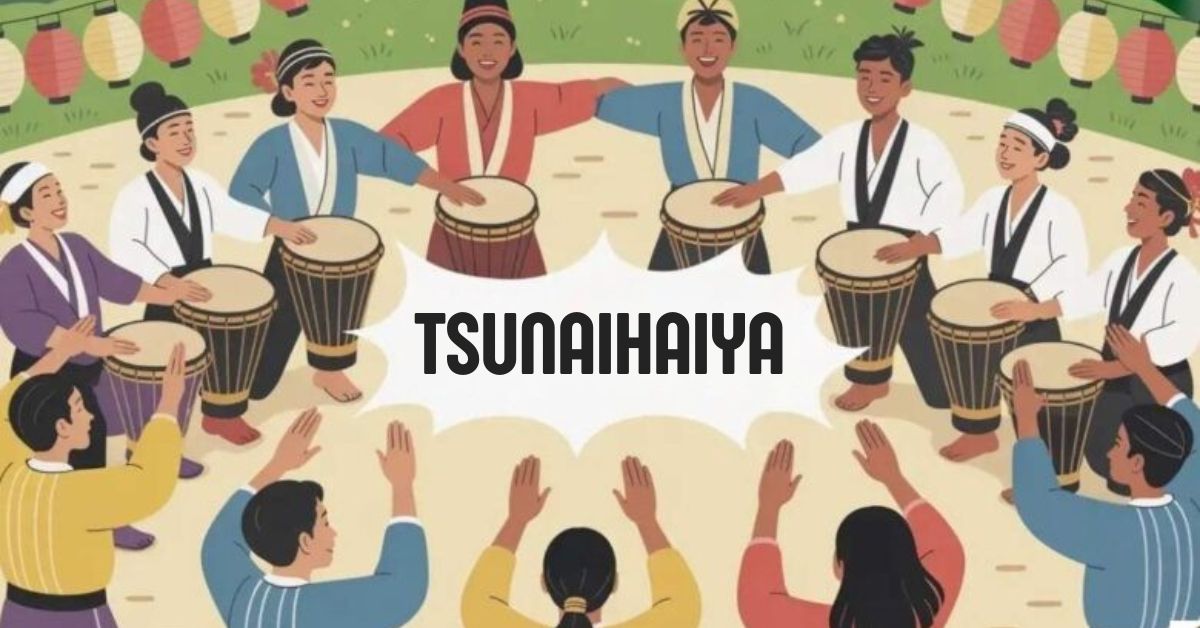Introduction to Tsunaihaiya
The term tsunaihaiya encompasses a wealth of artistic expression, cultural significance, and Native American history that goes beyond its literal meaning. For communities that value their heritage, this complex emblem has great emotional resonance because of its long and storied past. As we explore the meaning of tsunaihaiya, we will find that it is a special form of expression that promotes a strong feeling of community while also honoring creative ability. Come with us as we investigate their significance and the ways in which they continue to shape indigenous communities today.
The Origin and Meaning of Tsunaihaiya
Native American culture, history, and identity are deeply ingrained in Tsunaihaiya. The name itself has deep meaning that differs across indigenous communities. Having a strong bond with nature, family, and tradition is typically symbolized by it.
Throughout its history, it served as a powerful symbol of the journey of life and the stories that were handed down from one generation to another. Resilience and legacy are the themes that run through each piece.
Not only is talent evident in the crafting, but so are spiritual convictions. Craftspeople give their labor purpose and significance, making sure that every piece has cultural resonance.
Tsunaihaiya represents community harmony at its core. Physically representing the things that unite people over the ages, it is a monument to collective memory and shared experiences.
The Cultural Significance of Tsunaihaiya in Native American Communities
As more than merely a form of artistic expression, tsunaihaiya has a deep and meaningful position in Native American societies. It represents the fusion of individual and collective histories, as well as the importance of one’s own ancestry.
Tsunaihaiya was traditionally made by a group of people working together. The significance of these symbols was instilled in younger generations by the elders, who ensured the transmission of knowledge and customs. Tribal history and values are reflected in each piece’s distinct meaning.
In many events and occasions, it takes center stage. It brings people together as a community and helps them feel closer to their ancestors with its elaborate patterns and vivid colors.
Furthermore, these creative works are appreciated well beyond their immediate vicinity. To better comprehend and appreciate the diversity and depth of Native American culture, they place it in larger perspectives. As they celebrate resiliency in the face of hardship, artists express themselves via Tsunaihaiya.
The Artistry and Techniques Used in Creating Tsunaihaiya
The creation of tsunaihaiya is an intricate and time-honored craft. Starting using locally available, organic materials is a common practice among artisans. This includes things like plant fibers and animal skins.
Intricate weaving and beading are common methods, however they differ per culture. The artist’s community is reflected in every stitch, which has meaning and history.
Tsunaihaiya relies heavily on color. The spiritual and natural messages told via the vivid colors produced by dyes manufactured from native plants are quite remarkable. Clan membership or life events can be represented by patterns.
Hands with expertise can turn simple materials into stunning works of art. Craftspeople spend years honing their skills, so the finished product is more than simply an ornament; it’s a symbol of cultural legacy.
The transmission of knowledge from one generation of craftsmen to the next is a key component in the preservation of these time-honored practices.
Modern Adaptations and Uses of Tsunaihaiya
The changing function of tsunaihaiya in modern society is shown by its modern modifications. To create works that appeal to a younger audience, artists are fusing old and modern methods, materials, and styles.
Designers in the fashion industry use its themes to create garments and accessories. By bringing together different elements, cultural legacy is both preserved and enjoyed by more people.
Modern fads in home design use tsunaihaiya-style artwork, which breathes life into Native American traditions. In doing so, they pay homage to their roots while also serving as discussion starters.
The reach of tsunaihaiya has been even further broadened via digital channels. Its history and crafting processes are taught in online workshops, which promote appreciation across varied cultures.
Its essence lives on, evolving to suit contemporary preferences but staying true to its origins, even as new takes on it proliferate. Expression and cultural knowledge are both enhanced by the conversation between the past and the present.
How Tsunaihaiya is Preserving Native American Culture
Tsunaihaiya is an important cultural artifact because it bridges the gap between Native American generations and their customs. The stories that each item embodies are a reflection of the community’s history and are made with intention.
These works of art are more than merely ornamental; they have deep religious meaning. They help people feel more connected to their heritage and the generations before them. The process of manufacturing it typically requires teamwork, which brings people closer together.
This craftsmanship is on display in workshops and exhibitions so that newer generations can learn skills and be themselves as they see it. In a society where everything is always changing, this information transfer is vital for keeping cultural traditions alive.
Artists commemorate age-old narratives through tsunaihaiya while expressing modern challenges. By incorporating both modern and traditional practices, this culture is able to evolve while still honoring its roots.
Cultural preservation allows communities to make sure their opinions are heard now and in the future.
Conclusion
Tsunaihaiya is a living embodiment of Native American artistic expression and identity. Its roots are significant because they mirror the beliefs and customs that have been maintained throughout the years. This one-of-a-kind art form is an integral part of communal life and a great way to appreciate aesthetics.
Tsunaihaiya is a product of exceptional skill in its execution. By deftly combining age-old techniques with modern inspirations, artisans keep this cultural icon alive and well. Newer versions give them vitality while paying homage to their illustrious history.
Communities discover resilience and power via these creative manifestations. Tsunaihaiya is a symbol of cultural pride and a call to remember the knowledge of our ancestors. When it comes to keeping stories alive in the face of globalization, it is crucial.
When people embrace tsunaihaiya, they are engaging with the stories it conveys, which are rich with beauty, hardship, victory, and strong ties to the country. Our modern knowledge of Native American culture is enhanced by the layers of significance that this complex art form exposes throughout its journey, which goes beyond just aesthetics.
The power of creativity to shape identities through the ages is on full display as we honor its heritage both today and in the future.











